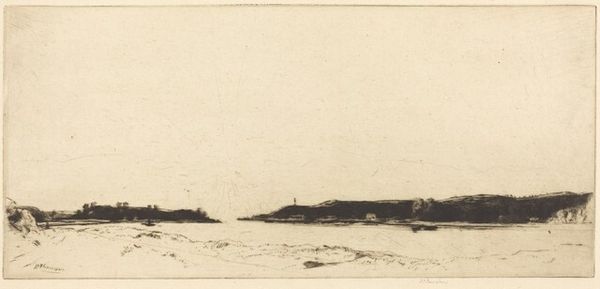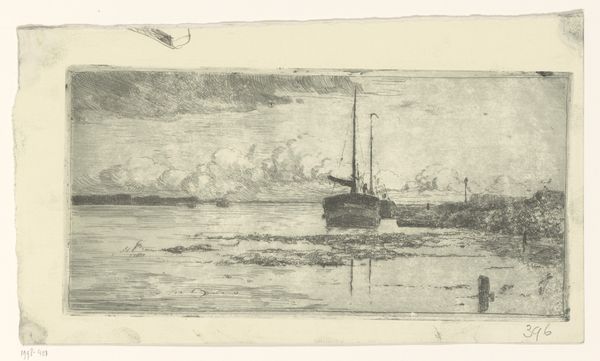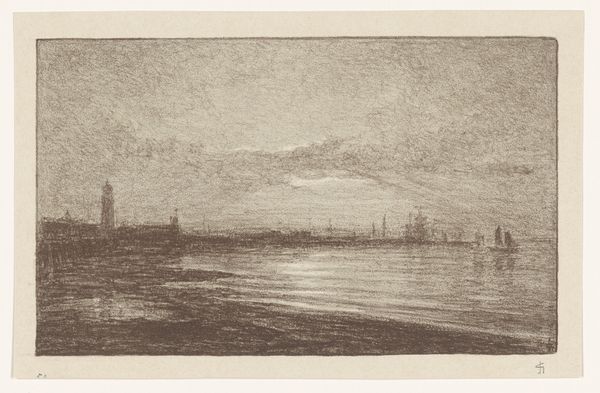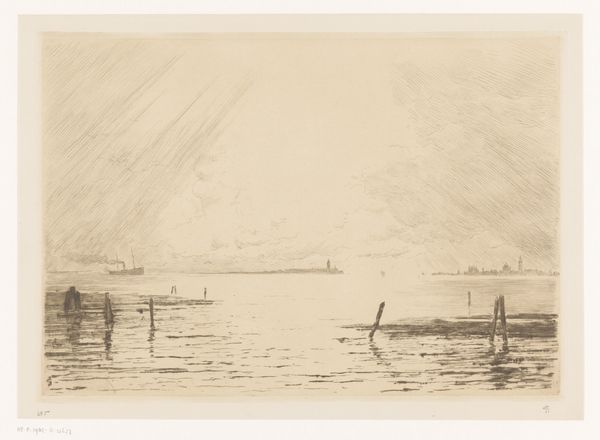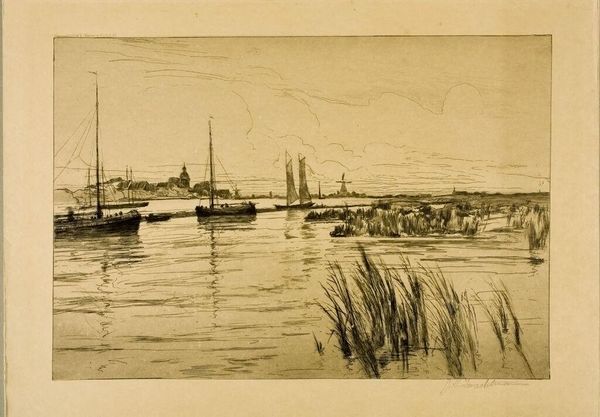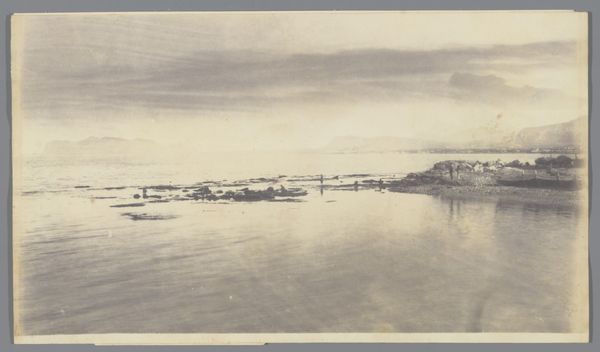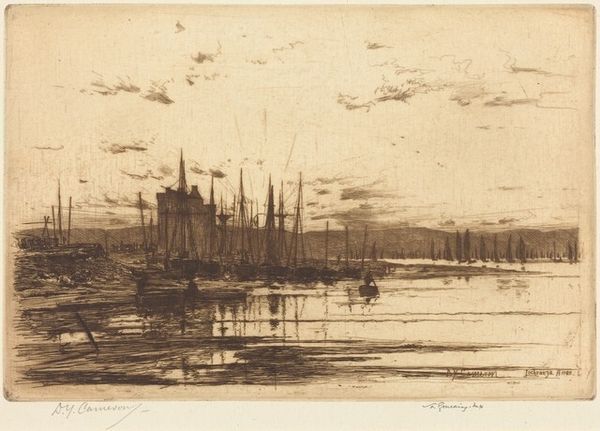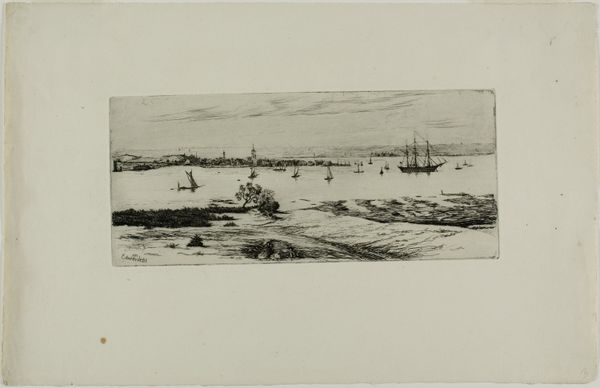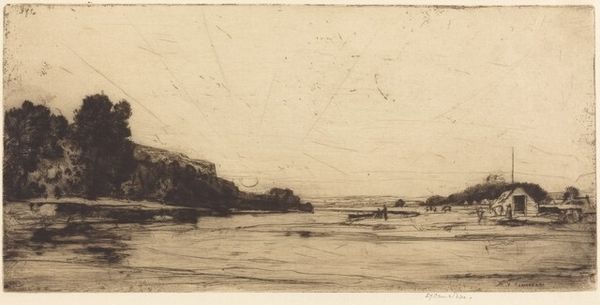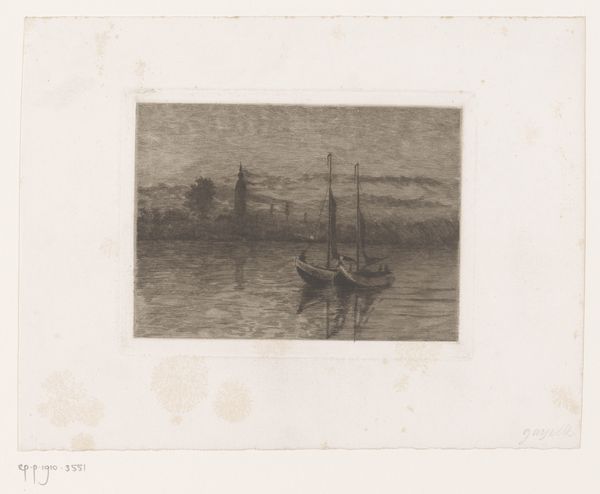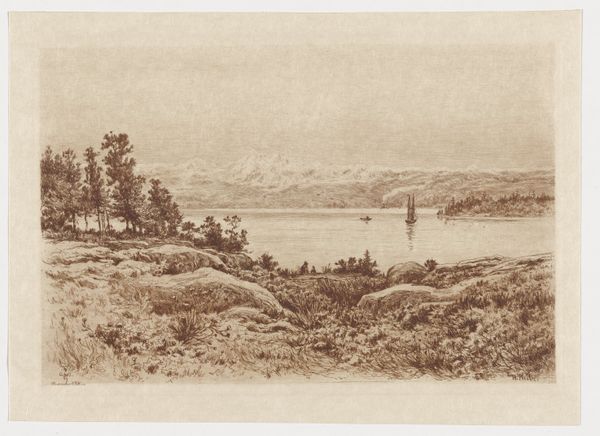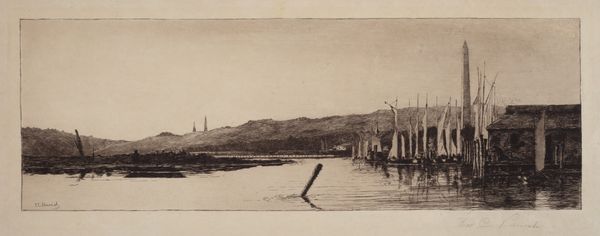
print, etching
# print
#
impressionism
#
etching
#
landscape
#
etching
#
realism
Copyright: National Gallery of Art: CC0 1.0
David Young Cameron created this etching, Clyde at Cardross. Immediately, the composition’s stark horizontal lines and subdued sepia tones evoke a sense of tranquil observation. The delicate balance between the detailed foreground and the misty, undefined background guides our perception and beckons us into the scene's serene and intimate moment. Cameron masterfully employs the etching technique to disrupt conventional landscape art. His precise lines and subtle tonal variations not only articulate the material reality of the scene but also its atmosphere and mood, almost blurring the line between representation and abstraction. The artist uses line and form not just to imitate nature, but to explore the symbolic potential of spatial arrangement, and atmospheric impact. The scene transforms into a study of perspective, in which the interplay between defined shapes and hazy forms invites a semiotic reading. The lasting power of this work stems from its formal qualities and its ability to invite a deeper, more nuanced understanding of space and representation. It asks us to consider how we make meaning through visual engagement.
Comments
No comments
Be the first to comment and join the conversation on the ultimate creative platform.
